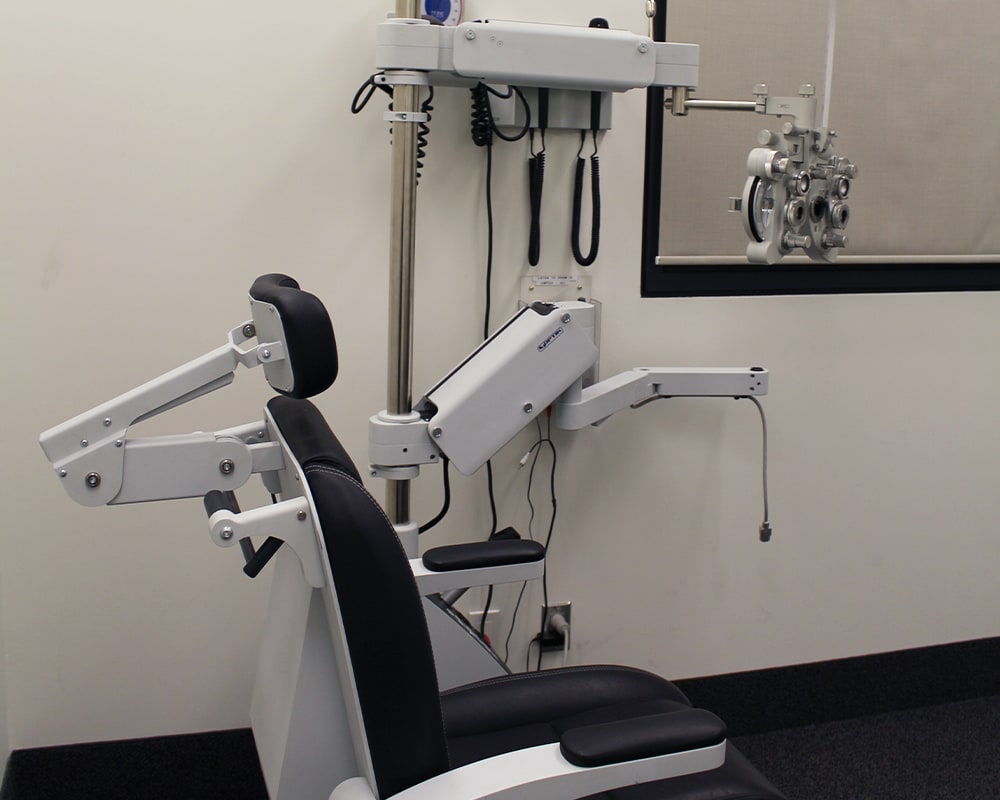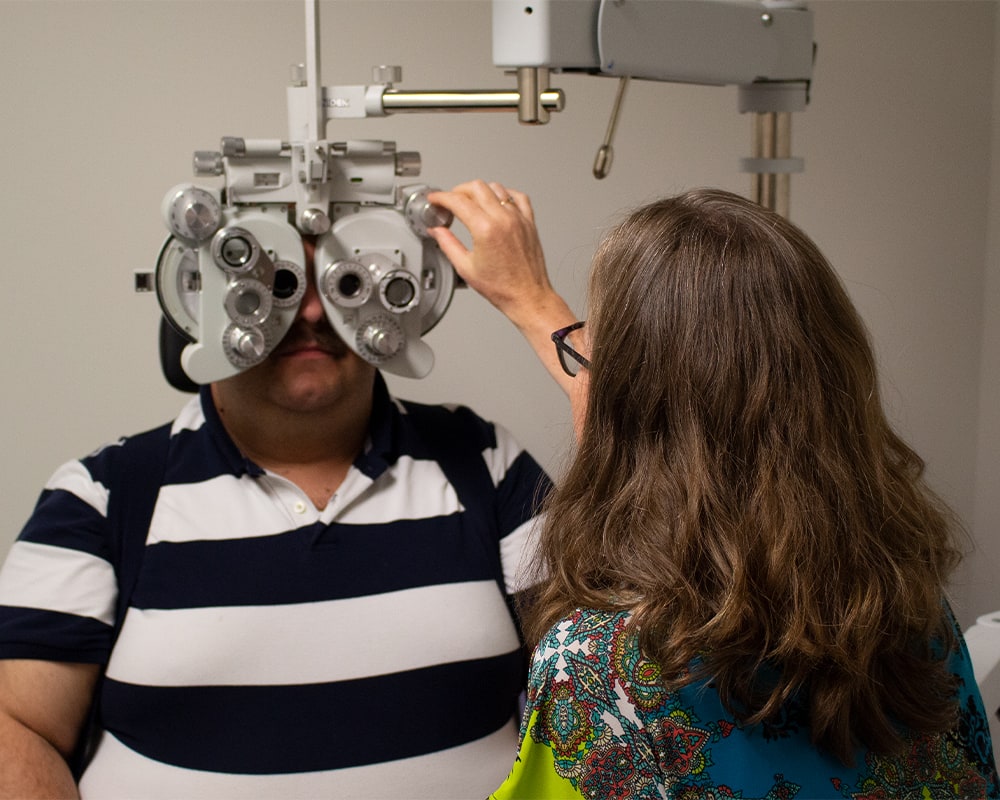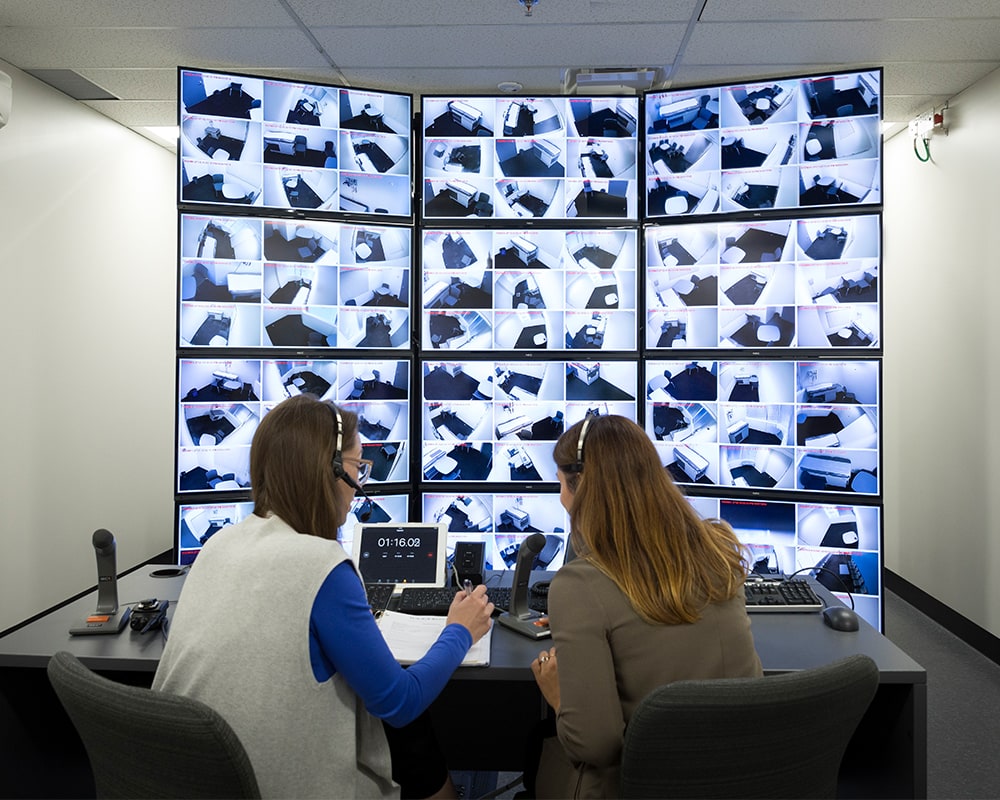ASSESSMENTS
Internationally Graduated Optometrist Evaluating Examination (IGOEE)
About
Touchstone Institute administers the Internationally Graduated Optometrist Evaluating Examination (IGOEE). The examination tests the knowledge, skills, attitudes and values of internationally graduated optometrists (IGOs) as compared to a recent graduate of a Canadian optometric program. The program was created by Touchstone Institute in collaboration with the College of Optometrists of Ontario (The College), and is recognized by the Federation of Optometric Regulatory Authorities of Canada (FORAC).
Exam Registration
See "Future Exam Dates" below.
Please note: Anyone wishing to take the in-person OSCE, Touchstone Institute has implemented a COVID-19 Vaccine Policy.
Location
OSCE Location: 145 Wellington Street West, Toronto, M5J1H8
MCQ Location: Remote Virtual
Touchstone Institute will refer to all individuals challenging an exam as examinees. In some virtual experiences, the term candidate may be used interchangeably with examinee.
Future Exam Dates
Virtual TPAO & MCQ & In-Person OSCE Dates

Note: Exam schedules are emailed to examinees 4-6 weeks before the date of the first exam component.
Registration
Registration
Registration for the IGOEE is available only to examinees who have received the following:
- Referral from the Federation of Optometric Regulatory Authorities of Canada (FORAC)
- Email confirmation from Touchstone Institute including registration instructions
For more information on IGOEE eligibility, please contact FORAC or a regulator directly.
Before registering for a Touchstone Institute Exam please ensure understanding of how the exam results contribute in the pathway towards licensure. If unsure, please contact the relevant regulatory authority.
Request for Letter of Participation
Examinees may request a Letter of Participation to support visa travel requirements only after they have registered for an exam date. Letters cannot be issued without an exam date listed on them. Visit the Contact us page to request a letter.
Request for Exam Accommodation
Touchstone Institute will provide reasonable exam accommodations for examinees with disabilities. Requests for accommodation and supporting documentation need to be submitted immediately after registering for an examination with us. See our Exam Accommodation Policy page to request an accommodation.
Code of Conduct
Exam Code of Conduct and Ethical Behaviour
Examinees participating in an assessment must sign an Exam Conduct Agreement attesting that they will not disseminate, circulate, publish or share any content of the examination. Breaches include comparing client responses with your colleagues, sharing exam content with future examinees and posting case information or exam questions online. Any breach in exam content or process may lead to disciplinary and legal measures, including invalidating your results.
Please read the Ethical Exam Behaviour page and sign the agreement at the bottom.
Fees & Payment
Fees & Payment
The IGOEE registration fee is CAN $5000. Fees are payable by Visa or MasterCard only. Registration will not be considered complete without immediate payment.
Cancellation & Refunds
Touchstone Institute accommodates a high volume of examinees and enforces a strict cancellation policy to ensure fairness. Please refer to our exam cancellation policy here.
Exam cancellation fee: CAN $1000
Deadline for refund (minus cancellation fee): 30 days before the examination
How to cancel or change exam date: please contact us
Format
Exam Format
All of assessments are designed to standardize as many exam elements as possible. Depending on examinee registration numbers and facility parameters, exam format may vary from the information provided on the website. Information regarding specific exam dates will be provided with exam invitations. Touchstone Institute is committed to ensuring that all examinees are given a fair and valid assessment experience.
The IGOEE consists of a balanced integration of four components:
Written Therapeutics Prescribing Assessment for Optometry (TPAO) examination - Virtual
Written General Multiple Choice Question (MCQ) exam - Virtual
Nine short-case Objective Structured Clinical Exam (OSCE) stations - In-person
Three long-case Objective Structured Clinical Exam (OSCE) stations - In-person
Virtual Written Therapeutics Prescribing Assessment for Optometry (TPAO) MCQ component
The Therapeutics Prescribing Assessment for Optometry (TPAO) examination is an MCQ exam that consists of up to 98 multiple choice questions. Examinees will have two hours to complete this portion of the IGOEE. Each question is connected to a case description, which may contain information about the patient, main complaint, ocular history, medical history and clinical data. Visuals may also be provided for the examinee to interpret. Each case description is followed by up to five questions. Examinees are required to choose the correct or best answer from a list of up to six responses.
The TPAO component will assess:
- Assessment/diagnosis
- Interpretation of examination results (lab/diagnostic imaging)
- Management (may include treatment referral if relevant)
- Mechanism of action/onset/duration of effect
- Side effects/drug interactions
- Management of side effects
- Monitoring, follow up, extensions
- Treatment
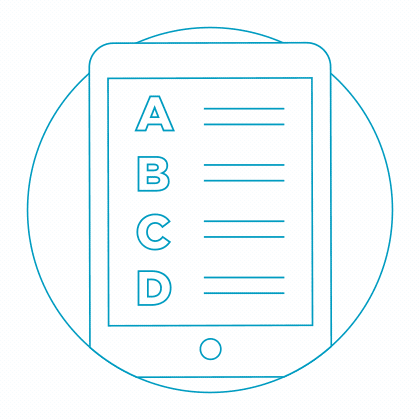
Virtual Written General MCQ
Examinees will have 2.5 hours to complete the general MCQ component of the IGOEE. This multiple choice question (MCQ) exam consists of up to 140 questions. Each question is connected to a case description, which may contain information about the patient, main complaint, ocular history, medical history and clinical data. Visuals may also be provided for the examinee to interpret. Each case description is followed by up to five questions. Examinees are required to choose the correct or best answer from a list of up to six responses.
The General MCQ assesses the following professional competencies:
Optometrists meet their patients’ eye and vision care–related needs with the objectives of achieving appropriate outcomes and maintaining or improving their patients’ quality of life.
Optometrists support an integrated health care system by collaborating with other health care professionals and service providers to facilitate the management of the overall health needs and to encourage the well-being of their patients.
Optometrists apply management skills to optimize the care of their patients and make efficient use of health resources.
Optometrists provide education with the goal of encouraging appropriate, effective, comprehensive eye and vision care.
Questions in the written component of the exam may cover the following areas:
- Patient assessment and diagnosis – especially relating to glaucoma, macular degeneration, diabetes, hypertension, vascular diseases and other causes of visual impediments, including refractive error and binocular vision anomalies
- Vision therapies – eyeglasses, contact lenses, low-vision therapies, binocular vision therapies and per-surgical care
- Drug therapies – especially those currently authorized to optometrists in Ontario
- Prevention of visual disability, morbidity and mortality
- Pediatrics
- Geriatrics
- Collaborative care

Performance Component - The In-Person OSCE
IGOEE examinees are being tested at the competency level of a recent Canadian optometric graduate who is ready to challenge the licensing examination.
The OSCE stations for this evaluating examination represent common workplace examples of the content areas. Examinees should manage each presenting case as they would in a real life practice setting. The exam consists of 12 standardized patient stations of either a 17 or 32 minute duration.
The OSCE assessment is divided into two parts:
- Three ‘long case’ stations with standardized patients and examiner questions
- Nine ‘short case’ stations with standardized patients and examiner questions
Examinees will be assessed on their ability to meet their patients’ eye and vision care needs with the objective of achieving appropriate outcomes and maintaining or improving their patients’ quality of life.
Examinees will need to demonstrate their ability to work within an integrated healthcare system by collaborating with other health care professionals and service providers to facilitate the management of the overall health needs and to encourage the well-being of their patients.
- Knowledge integration
- Clinical skills
- Behaviour
- Attitude
- Values
- Refractive errors and presbyopia
- Diabetes
- Binocular vision
- Retinal vascular disease
- Cataract glaucoma or glaucoma suspects
- Anterior segment disease
- Macular disease
Short Case OSCE Information
Nine of the 12 OSCE stations are short cases. Each short case station is 17 minutes in length.
Two minutes reading time
On the wall outside each clinical station there is a written statement (examinee instructions) that may include the following information:
- Patient’s name
- Patient’s age
- Task you are being asked to perform (i.e., history taking). Examinees will have two minutes to read the instructions outside the stations and may make notes in their booklet (provided). An announcement will indicate when examinees may enter the station to begin their interaction with the standardized patient. A copy of the instructions will also be available in the examination room for the examinee to reference.
Five minutes total interaction time with the standardized patient
Upon entering the station, examinees will have five minutes to interact with the standardized patient and complete the required task(s) listed on the examinee instructions. Examinees should take some time to introduce themselves to the patient.
During the patient encounter, examinees will not be required to perform a physical examination but will be assessed on the following:
- History and data collection
- Communication skills
- Planning
- Implementation
- Organization
- Time management
- Evaluation (of patient understanding)
A standardized patient is an actor trained to replicate a patient’s signs and symptoms in a reliable and consistent manner. Treat them as you would a real patient in a real clinical environment.
At the four-minute mark, examinees will hear an announcement indicating that they have one minute remaining with the standardized patient. This time should be used by the examinee to summarize the encounter for the patient, if possible.
10 minutes
The patient encounter is followed by a structured oral interview. The examiner may ask up to 10 questions about the presenting case and may present visual photographs or data for interpretation. During this time, the standardized patient will no longer engage with the examinee.
Exit and proceed to the next station
An announcement will be made to indicate when time is up. Examinees will be asked to leave the station immediately, move to the next station and begin reading the instructions. Examinees are not allowed to enter or leave a station before they are told to do so.
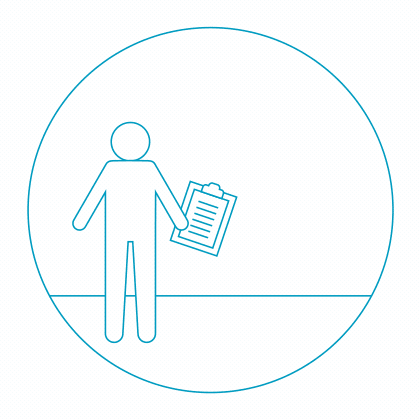
Long Case OSCE Information
Three of the 12 OSCE stations fall within the long case category. Each long case is 32 minutes.
Examinees should note that they will be expected to perform the following optometric procedures on standardized patients:
- Dilated fundus exam
- Binocular indirect ophthalmoscopy
- Contact Tonometry
- Gonioscopy with fundus lenses
Failure to identify your inexperience in these procedures could place the patient at risk. Examinees will be required to complete an acknowledgment form on the day of the exam attesting that they have the training and experience to perform these procedures on standardized patients in a safe manner.
Two minutes reading time
On the wall outside each clinical station there is a written statement (examinee instructions) that may include the following information:
- Patient’s name
- Patient’s age
- Task you are being asked to perform (i.e., physical examination). Examinees will have two minutes to read the instructions outside the stations and may make notes in their booklet (provided). An announcement will indicate when examinees may enter the station to begin their interaction with the standardized patient. A copy of the instructions will also be available in the examination room for the examinee to reference.
After entering the station examinees will have two minutes to view equipment and position themselves appropriately. An announcement will indicate when they can begin their patient interaction. Examinees may NOT begin the patient interaction before the announcement. Examinees will not be scored during the equipment check.
22 minutes total interaction time with the standardized patient
After the starting announcement, examinees will have 22 minutes to interact with the standardized patient and complete the required task(s) listed on the examinee instructions. Examinees should take some time to familiarize themselves with the equipment and introduce themselves to the patient.
During the patient interaction, examinees will be assessed on the following:
- History and data collection
- Physical examination skills
- Communication skills
- Planning
- Implementation
- Organization
- Time management
- Evaluation (of patient understanding)
A standardized patient is an actor trained to replicate a patient’s signs and symptoms in a reliable and consistent manner. Treat them as you would a real patient in a clinical environment.
Examinees are required to explain to the station examiner exactly what they are doing during the assessment of the patient. Remain focused and don’t forget that the examiner will be scoring your clinical skills and process. Successful examinees will be able to demonstrate their clinical ability with the patient in a natural, focused, professional manner.
Examiners may move around the room to get the best view while you demonstrate your skills. Examiners may also provide examinees additional information related to the patient during the encounter.
At the 21-minute mark, examinees will hear an announcement indicating that they have 1 minute remaining with the standardized patient. This is a good time to provide a summary of the points covered with the patient.
Six minutes
The patient encounter is followed by a structured oral interview during which the examiner may ask up to 10 questions about the presenting case and may present visual photographs or data for interpretation. During this time, the standardized patient will no longer engage with the examinee.
Exit and proceed to the next station
An announcement will be made to indicate when time is up. Examinees will be asked to leave the station immediately, move to the next station and begin reading the examinee instructions for that station. Examinees are not allowed to enter or leave a station before they are told to do so.

Exam Resources
What to Expect on OSCE Exam Day
OSCE Exam Day
What to bring to the exam:
All required equipment will be provided.
Items not allowed in the exam:
Examinees should leave personal belongings at home, if possible, as many items are not permitted during the exam and storage space is limited. The following items must be checked in at registration:
Items permitted in the exam:
Examinees may have the following items with them during the exam:
Present these items to exam staff for inspection while at registration
In Person Exam Day Dress Code
- Examinees are encouraged to dress in comfortable, casual professional attire.
- Profession specific clothing is not required as examinees are not scored on how they are dressed.
On the exam day, before you start the exam:
- If you are unwell or have extenuating circumstances which may negatively impact your assessment performance, you have the option to withdraw from the exam before it begins. Touchstone Institute will work with you to schedule an alternate date for assessment.
- If you choose to start the examination and request to leave before completing the entire examination, a staff member will document your reason for non-completion. This information will be forwarded to the College.
Breach of Examination Content and Process:
Before entering the exam, examinees must sign an Exam Conduct Agreement. By signing the agreement, examinees acknowledge their understanding and acceptance of the information contained within the Agreement.
Touchstone Institute has the right to take action against an examinee who has breached the Exam Conduct Agreement or has participated in unethical behaviour, as detailed on our website.
Results
Results from the IGOEE take up to eight weeks to process and are sent directly to the Federation of the Optometric Regulatory Authorities of Canada (FORAC). FORAC communicates the results directly to examinees.


